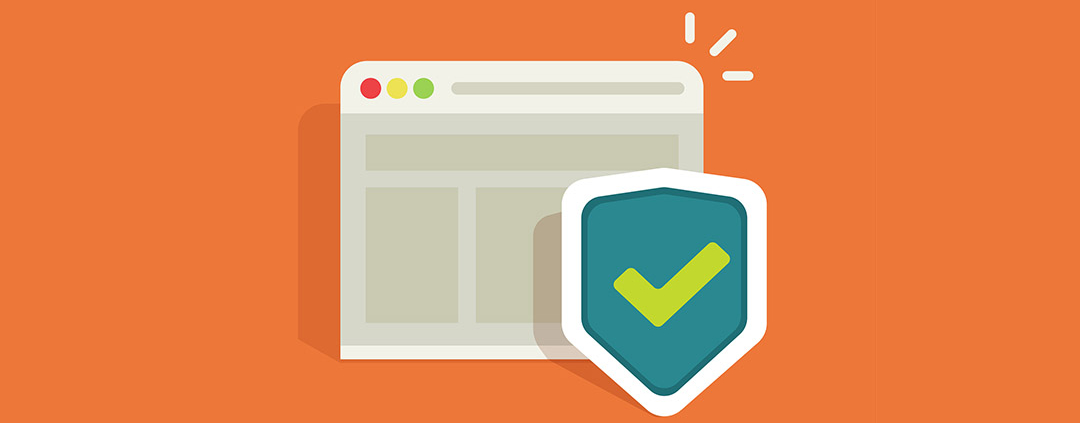Make Your Browsing Safer with These 7 Simple Tips
Below, you will find several tips to help you safely browse the Internet. About the author: Akshata Shanbhag (makeuseof.com) is a writer with a strong interest in slow, focused, simple living. She prefers telepathic conversations to phone calls and emails and tweets, but she would be happy to help you solve your tech problems via email. MakeUseOf is a technology website, focused on bridging the connection between users, computers, devices and the Internet through education. Image courtesy of vladwel via Bigstockphoto.
Safe browsing is more of an ongoing task than a set-it-and-forget-it affair.
You have to generate strong passwords and manage them, sidestep malicious pranks and scripts, protect your web activity from trackers, dodge email spam, keep your files and personal info safe, and so on — there’s just so much to do and it can be daunting. That’s why we have come up with seven essential starter tips to help you browse more safely.
Keep Your Browser Up-To-Date
When you update your browser, you’re not just getting access to new features and bug fixes. You’re also getting better protection from security flaws and malware, thanks to the security fixes that come bundled with every new release. Don’t miss out on this up-to-date protection and put your data at risk. Update your browser to its latest version now.
Your browser might be set to automatically download and install updates by default. If you have turned off automatic updates, update your browser manually. You’ll find the option to do that in your browser’s About section (on most mainstream browsers anyway).
On Windows PCs, you’ll find a link to the About section hidden within the Help menu of your browser. On MacBooks, you can access the About section via the menu next to the Apple icon at the top left when your browser is active. Check your browser’s documentation for further information on keeping your browser in top shape.
Using an up-to-date browser on an unsupported version of an operating system (OS) can also be a security risk. Upgrade your OS, or at least find a safer browser for it.
Get HTTPS:// Everywhere
Many websites offer an HTTPS (HyperText Transfer Protocol Secure) connection, which is a more secure way to browse when compared with the default HTTP connection.
HTTPS encrypts your interaction with the browser; here’s everything you need to know about HTTPS. The catch is that this form of communication is not enabled by default and you might not feel inclined to enable it manually every time. That’s why you need a browser add-on like HTTPS:// Everywhere, which adds an automatic layer of security by enforcing an HTTPS connection.
Expand Shortened URLs
You need to be careful while clicking on short URLs, because they may not always be on the up and up. A short URL could be hiding a deceptive link that downloads malware to your computer or redirects you to unexpected and/or inappropriate web content.
A web app like CheckShortURL is all you need to escape this minefield. For any short URL that you copy-paste into the app, it displays the corresponding long URL. If the expanded URL doesn’t match up with the site and the content that you’re expecting, leave the short URL alone.
DuckDuckGo users could previously expand URLs with the syntax expand short_URL before, but that no longer seems to work. Give it a shot anyway if you use DuckDuckGo.
Browse Incognito on Borrowed Computers
Whether you’re looking up information on a computer at the library or checking your email from a friend’s computer, it’s best to do so using the browser’s private mode or incognito mode. When you surf in the private mode, none of your browsing history gets saved to that computer (but downloads do).
Keep in mind that private browsing doesn’t make you anonymous online and you can still get tracked.
Private browsing comes in handy even on your computer — you can go incognito to check for price discrimination, log into a second account on a website, shop for surprise gifts, and so on.
If you’re away from your computer often and end up browsing on shared machines, consider carrying a portable version of your browser on a USB stick. Your browsing data gets backed up to the USB and no trace of it gets left behind on the shared computer.
You’ll also want to create a guest profile in your browser if you’re letting someone browse from your computer. Setting up a guest user account with limited permissions would be even better.
Activate In-App Security and Privacy Features
Most services, apps, and devices come with at least a few basic settings designed to protect your online activity. Make use of them. For starters, change these Skype privacy settings, improve your Gmail security in five minutes, and activate these smartphone privacy settings.
Also, activate two-factor authentication (2FA) and add pass codes to apps that contain sensitive information. Don’t forget to secure the browser in your smartphone — it’s just as vulnerable as the one on your desktop.
Every month or so, check your Google, Facebook, and Dropbox accounts (plus any others) and go through the list of third-party apps that can access these accounts. If you find any apps that you haven’t used in a while or that show suspicious activity, revoke their permissions.
Look Before You Click
What happens when you surf the web? Your eyes get bombarded with interesting links. You see them, you click them. That’s just the kind of impulsive behavior that can get you into trouble online, because you might be clicking on a virus-laden download, a fake website, or a well-disguised phishing scam.
Pay attention to the links that you’re clicking on. Take a quick look at your browser’s status bar to view the URL hidden behind the link and know what exactly you’re clicking on. If it’s a shortened URL, expand it as we discussed above.
To protect yourself from unsafe areas on the web, we recommend installing Web of Trust (WOT). It’s a browser extension that scores websites on their trustworthiness, making it easier for you to decide whether it’s safe for you to visit them. WOT ratings are generated by users like us and not security experts, so it’s worth keeping in mind that there are certain occasions when you shouldn’t trust WOT.
Stay away from alarmist banners proclaiming that your computer is at risk or that it’s filled with viruses and you need to download this cleaner or that to fix everything. Also, learn which security symbols to watch out for and how to deal with security certificate errors.
All your efforts to protect your privacy will get ruined if you aren’t careful about what you post on social networks and other websites. Beware of letting slip important information like your home location, travel destination, or credit card number on a public platform.
Install the Right Extensions
Feel free to delegate some of your browser-securing duties to extensions. These extensions to block tracking and scripts are a good place to start.
A word of warning here: even extensions can go rogue. Make an effort to stay informed about the latest security and privacy threats going around, so that you can avoid them in time.
Browser Safety First
Safe browsing becomes easier once you have gone through the basics of patching up your browser and learned a few good browsing habits. Soon you’ll feel ready to tackle our guide to online privacy and security and these books about cyber security.


